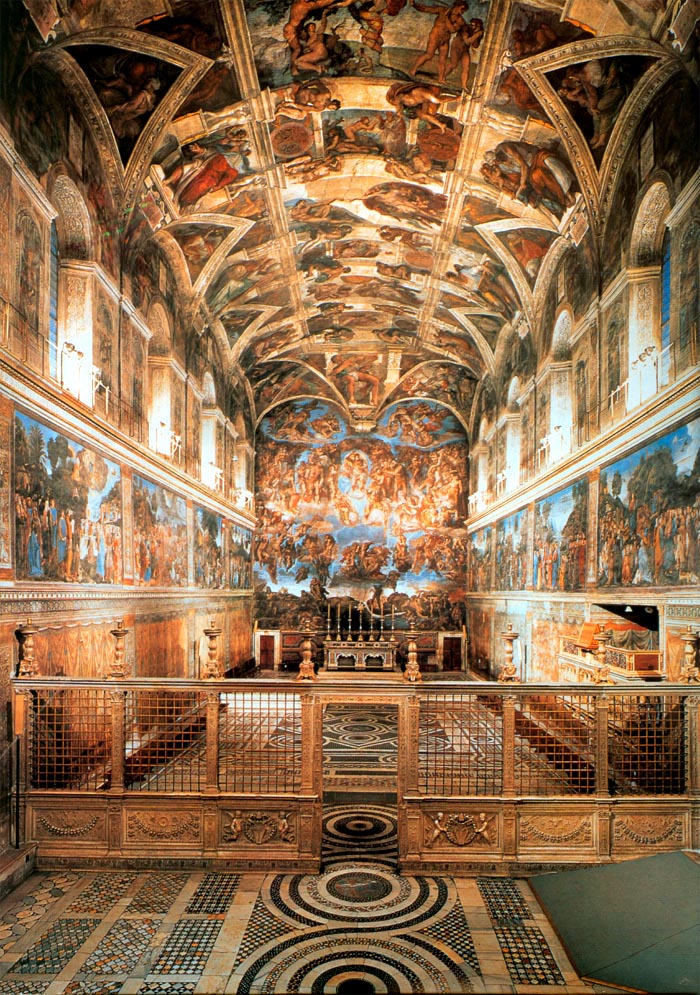The Italian Renaissance was a breath of fresh air for Italy. This time period was a revolution in design. Classical forms were refined and adapted to new uses. The Roman Catholic Church had become very powerful and corrupted. Everyone was interested in art, literature, architecture and design. Starting with the home or in this time period it was called the Palazzo. Palazzo's were many units put together like as we see today apartments or town homes. There was many repetition, windows, and pillars. It was centered around a courtyard and there were three floors. The third floor was mainly for the wealthy were the interior was very lavish and elegant with extravagant furniture and detail. The second floor was for the middle class were it wasn't as lavish as the third floor. Below are images of the Palazzos.

 |
| Courtyard |


One famous home that is very elegant and lavish is the Medici home. Michelozzo di Bartolommeo was their architect for their home.



People were getting more involved and interested in art and one of the most famous artist and architect during this time period was Michelangelo. His most famous pieces include the Sistine Chapel and the sculpture of David. His work is very detailed and phenomenal.


The interior of this time period was very lavish with decorative moldings, elaborate ceilings, tapestries, the doors and archways. Even their furniture was detailed as you can see below.


Today's Application:


Other Student's Blog:
Looking at Emily's blog I like how she discussed the Palazzos. They portrayed repetition, alteration, and progression. Shops and businessness were held on the main floor while the second and third floors were living areas. I also liked her current applications.
Another classmate Justine discussed how this time period was a rebirth starting from the 24th century to the 16th century. It took place in Tuscany and then later spread to Florence, Siena, and Venice. She also talked about the town square where many facades stood.
No comments:
Post a Comment